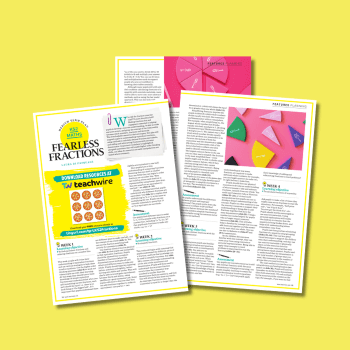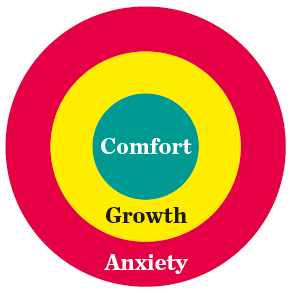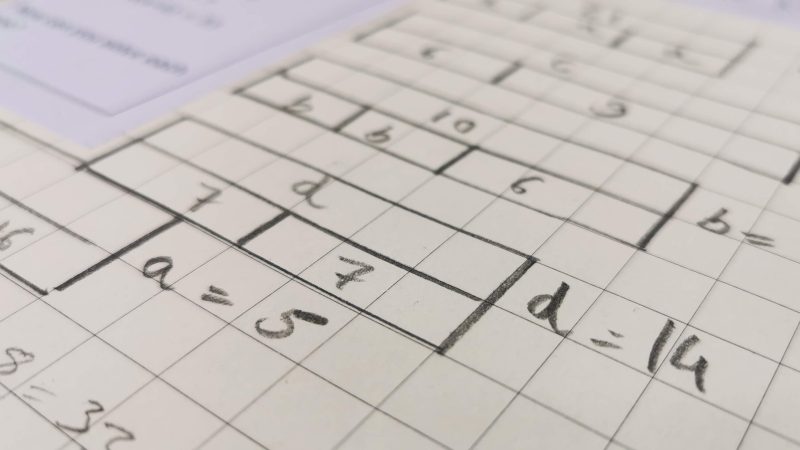3 steps to build resilience in primary maths

Use these practical tools and approaches from Alexandra Riley to help tackle anxiety and build more confident learners in KS1 and KS2…

‘I was bad at maths and I didn’t understand it, so I got frustrated and upset. It made me feel a bit dumb and stupid, so I gave up on my other subjects too.’
Elsie, a pupil reflecting on her experience of maths anxiety
Does Elsie’s view sound familiar?
With one in 10 eight- to 13-year-olds in Britain thought to suffer from maths anxiety, Elsie’s experience is sadly commonplace in maths lessons across primary schools.
Maths anxiety affects thousands of people. Seen and felt in schools, homes and workplaces, it is widely acknowledged as a barrier to engagement and progress in maths, as well as other areas of education, employment and life.
The good news is that maths anxiety can be tackled. With the right tools and commitment, everyone can build confidence and resilience in mathematics. But how?
Here, are some steps with practical tools and approaches to help turn ‘I can’t’ attitudes to ‘I can’.
1 | Understanding and identifying the issue in your setting
Before schools can work to build greater mathematical resilience, teachers and staff need to have a clear understanding of what maths anxiety is and how it affects their pupils.
So what is maths anxiety in a nutshell? Leading academic, Sue Johnston-Wilder, explains:
‘Maths anxiety can be described as a negative emotional reaction to mathematics that acts as an ‘emotional handbrake’ and holds up progress in maths.’
There are many common misconceptions around maths anxiety, so it’s important that teachers understand that:
- The severity can range from a feeling of mild tension to experiencing a strong and deep-rooted fear of maths
- It spans the attainment spectrum, from high-fliers to those who find the subject more challenging
- It’s not always obvious – it can sometimes be invisible and often unnoticed, manifesting itself at times as poor behaviour, anger, frustration, avoidance, under-attainment and helplessness.
Raising awareness of the issue can make a difference. Why not run focused CPD with staff drawing on the likes of the Cambridge Espresso research digests on maths anxiety, or put the definition of maths anxiety on a board in the staffroom?
You can also use pupil and teacher questionnaires. As no two schools are the same, leaders and teachers should seek to understand the cause and scale of the issue in their own context.
Questionnaires for pupils and teachers can be useful tools to support this, helping to identify any patterns and inform prevention and treatment strategies.
Surveys could range from simply asking pupils to anonymously rate their anxiety when they are asked a maths question, from one to ten, to more detailed questions for staff.
2 | Embed tools into your lessons
Mathematical resilience focuses on encouraging mathematical engagement and persistence in a way that reduces the negative effects of maths anxiety.
There are tools that will not only support your maths-anxious learners, but can build greater confidence and resilience among your whole class:

The Growth Zone Model
The Growth Zone Model (Lugalia et al, 2013) gives a framework for pupils to name and communicate their feelings, helping to reduce anxiety and build resilience.
- The comfort zone
Learners work on familiar tasks independently, building their self-confidence and providing opportunities for practice and automaticity.
New learning happens here; it’s safe to make mistakes, get stuck, require support, and find activities challenging and tiring.
Here, what is being asked is not within the learner’s reach at that moment. The learner starts to experience threat rather than challenge, stress increases, cognition decreases, and little or no useful learning takes place.
Teachers can introduce pupils to the framework and encourage them to use their own words to describe their feelings when faced with different situations, such as feeling challenged or comfortable with activities.
Print copies of the growth zone model for your learners as a tool to use regularly. Learners can place an object on the colours of the model to indicate their emotions.
This will help them to be more aware of their emotional responses and allows teachers to better understand when to challenge learners in the ‘comfort zone’ with a question, or support learners in the ‘anxiety zone’.
When pupils are in the anxiety zone, healthy learning cannot take place. The focus should instead turn to reducing the anxiety as quickly and supportively as possible.
Every learner’s experience of maths anxiety will differ, and depending on the severity and frequency, they could have a one-to-one session with targeted support as needed or be given space to take a break,
Teaching all pupils about the ‘relaxation response’ can also be a helpful tool so that learners can regulate their emotions when they begin to feel anxious.
Developed by Dr Herbert Benson, it is seen as a quick, effective way to switch off the brain’s fight-or-flight response by engaging the parasympathetic nervous system and returning the learner to a calm state.
Learners should focus on their breathing, surrounding sounds or the repetition of a well-chosen word, for instance ‘calm’ or ‘joy’. As the learner repeats their chosen word, in time with their breathing (if possible), they’ll be able to clear their mind and return to thinking effectively.
Learners can do this consciously, as and when they are beginning to feel anxious.
3 | Showcase the creativity and relevance of maths
A key way to reduce maths anxiety is to move away from focusing on right and wrong answers, and instead bring creative thinking and maths in real life applications to the fore.
Maths lessons should reflect real life, be creative and conjure a sense of exploration and curiosity. Mathematicians regularly work in groups to explore concepts and challenges, so how about encouraging more group work and teamwork in classrooms too?
This can support creative thinking and engagement with the subject as it promotes collaborative problem solving and mathematical discussion.
Research has found that when parents and carers are more mathematically anxious, their children learn significantly less maths and develop greater maths anxiety. So, building greater resilience among adults is incredibly important!
One step could be to rethink your approach to maths homework. For parents/carers who lack confidence or suffer from maths anxiety themselves, maths homework can cause stress and exacerbate a negative reaction, with long-lasting consequences for families.
How about setting fun maths activities that can have a positive impact on children’s learning and perceptions of maths at home?
Activity examples could include playing ‘rock, paper, scissors’ but instead hold up a number of fingers. The first person to shout out the total number wins. Or they could hunt for shapes around the home and take pictures on their phone to check they’ve found them all.
While maths anxiety won’t be tackled overnight, working together in school and at home to celebrate the magic of numbers and reframe how we teach maths are important steps on the journey to driving out fear and building greater resilience and success in maths.
Alexandra Riley is senior strategy manager at Pearson and part of the team behind the #PowerOfMaths campaign. Find out more at go.pearson.com/tacklingmathsanxiety and on Twitter at @PearsonSchools.












